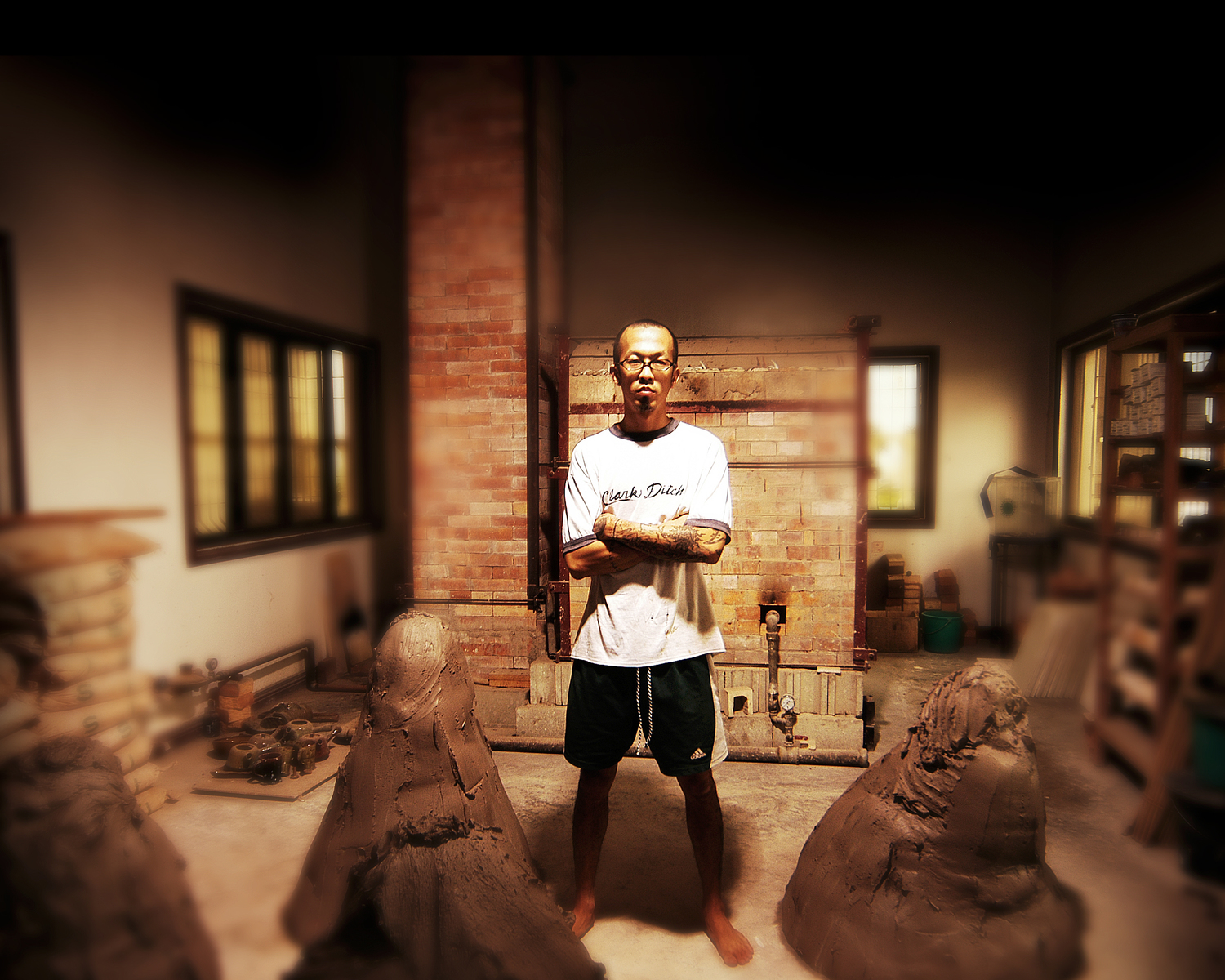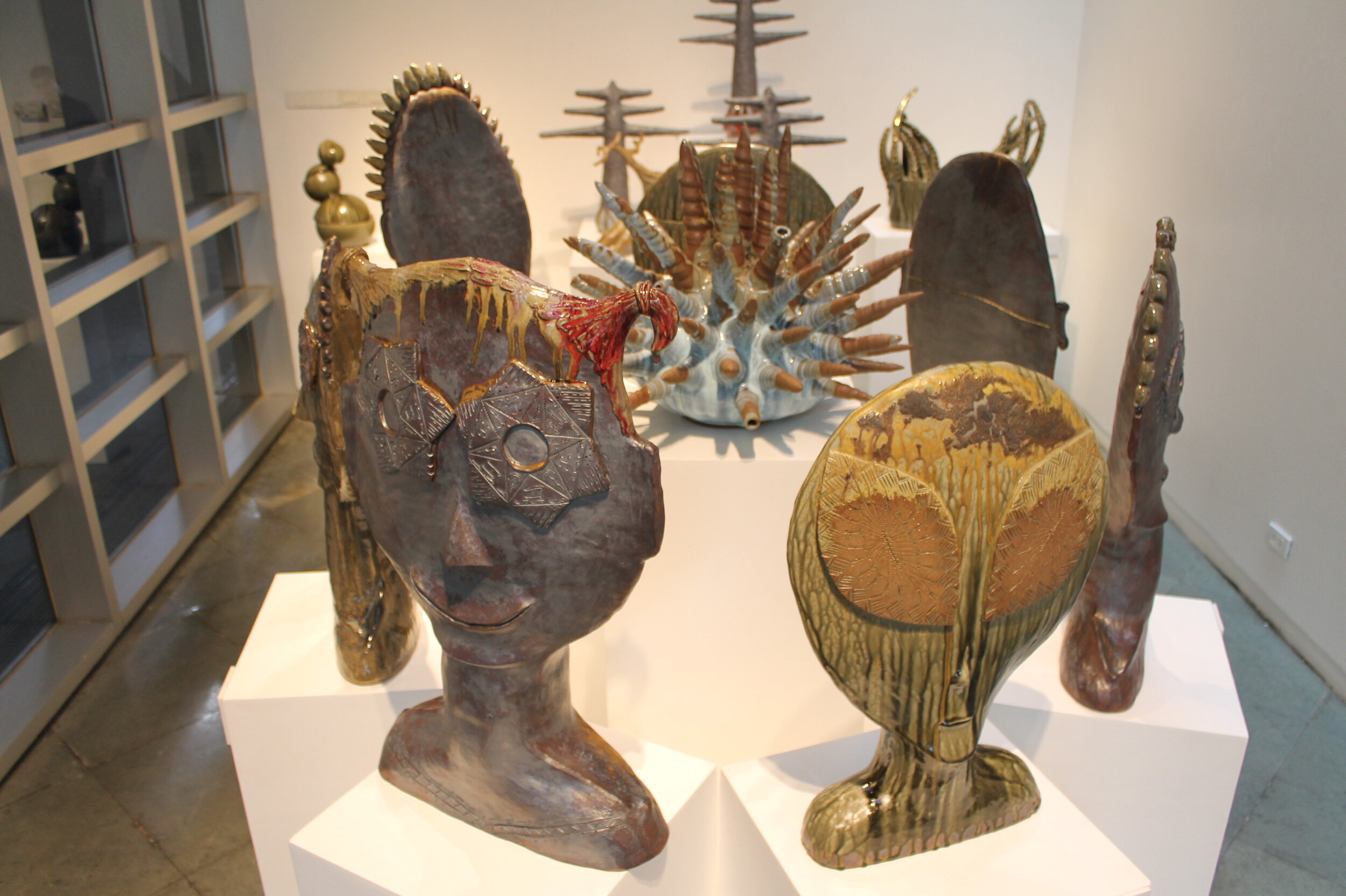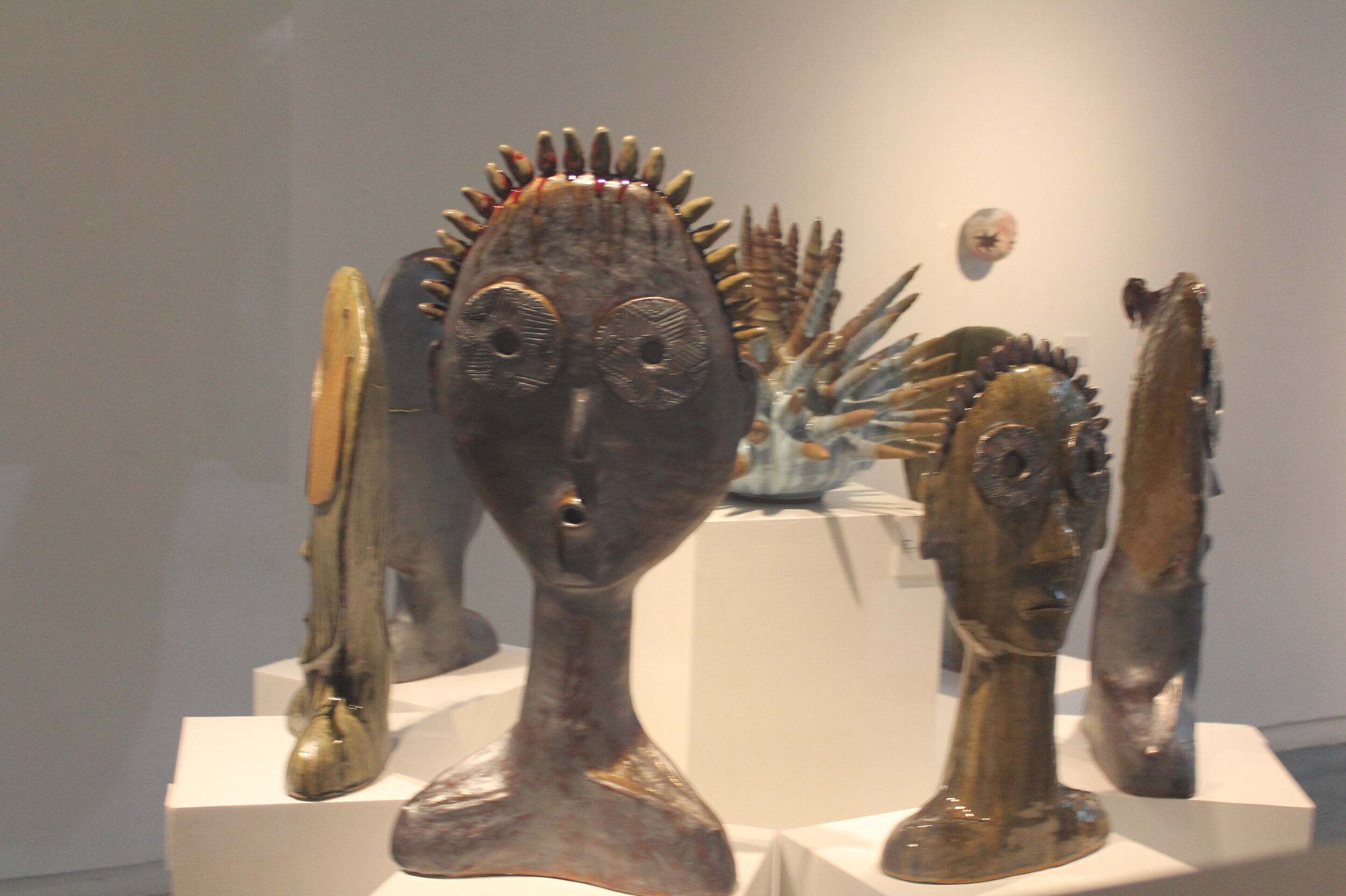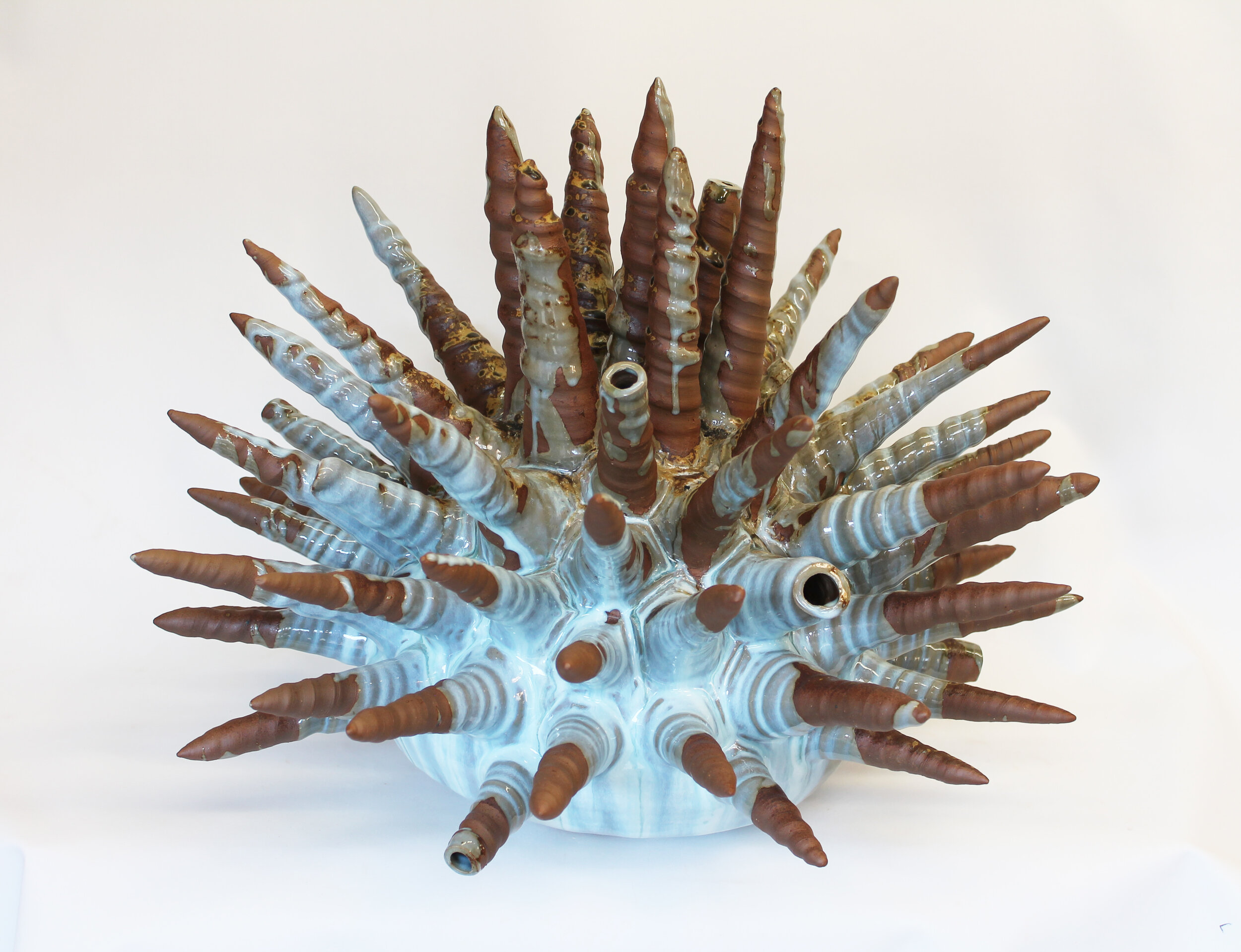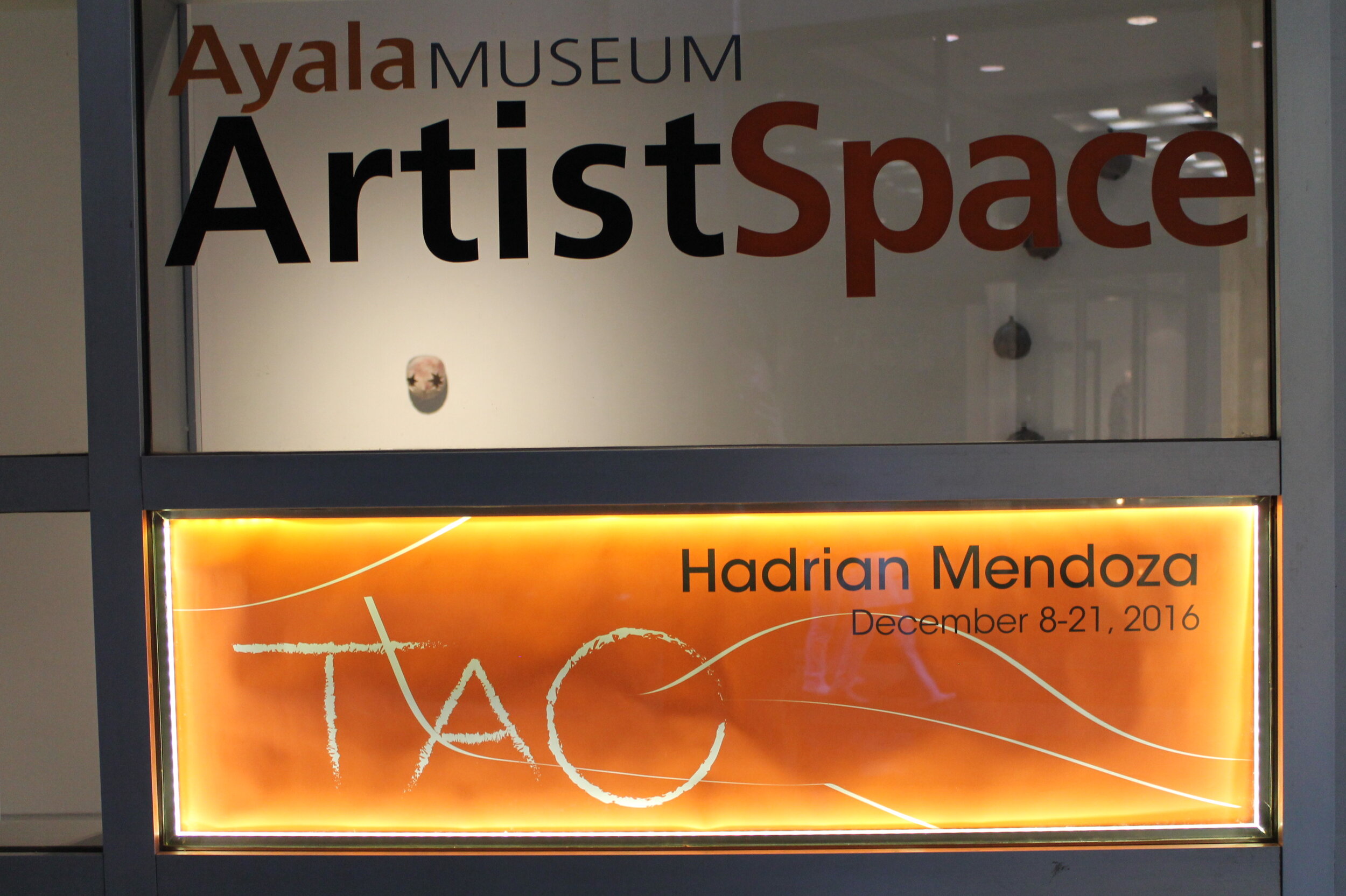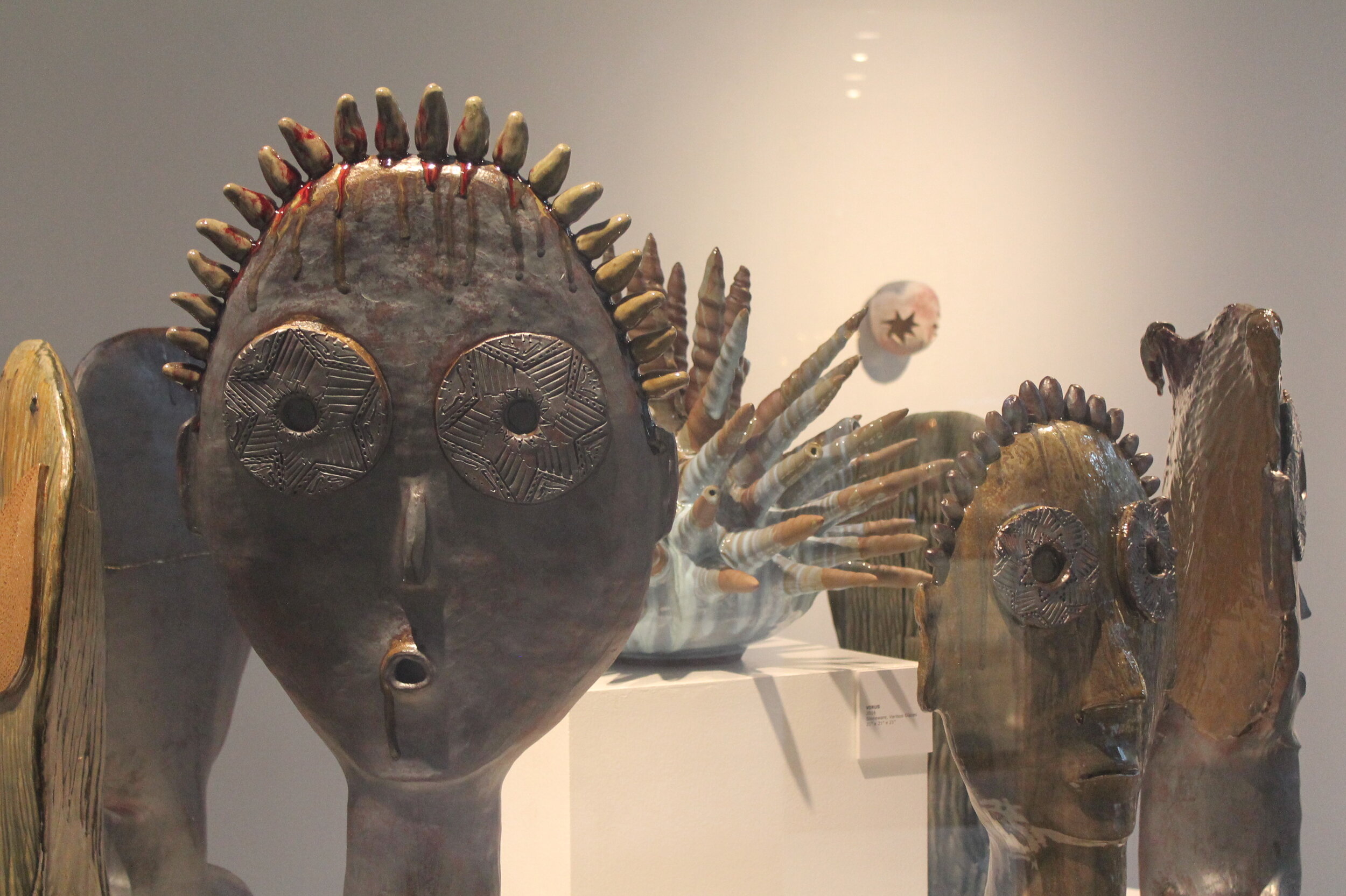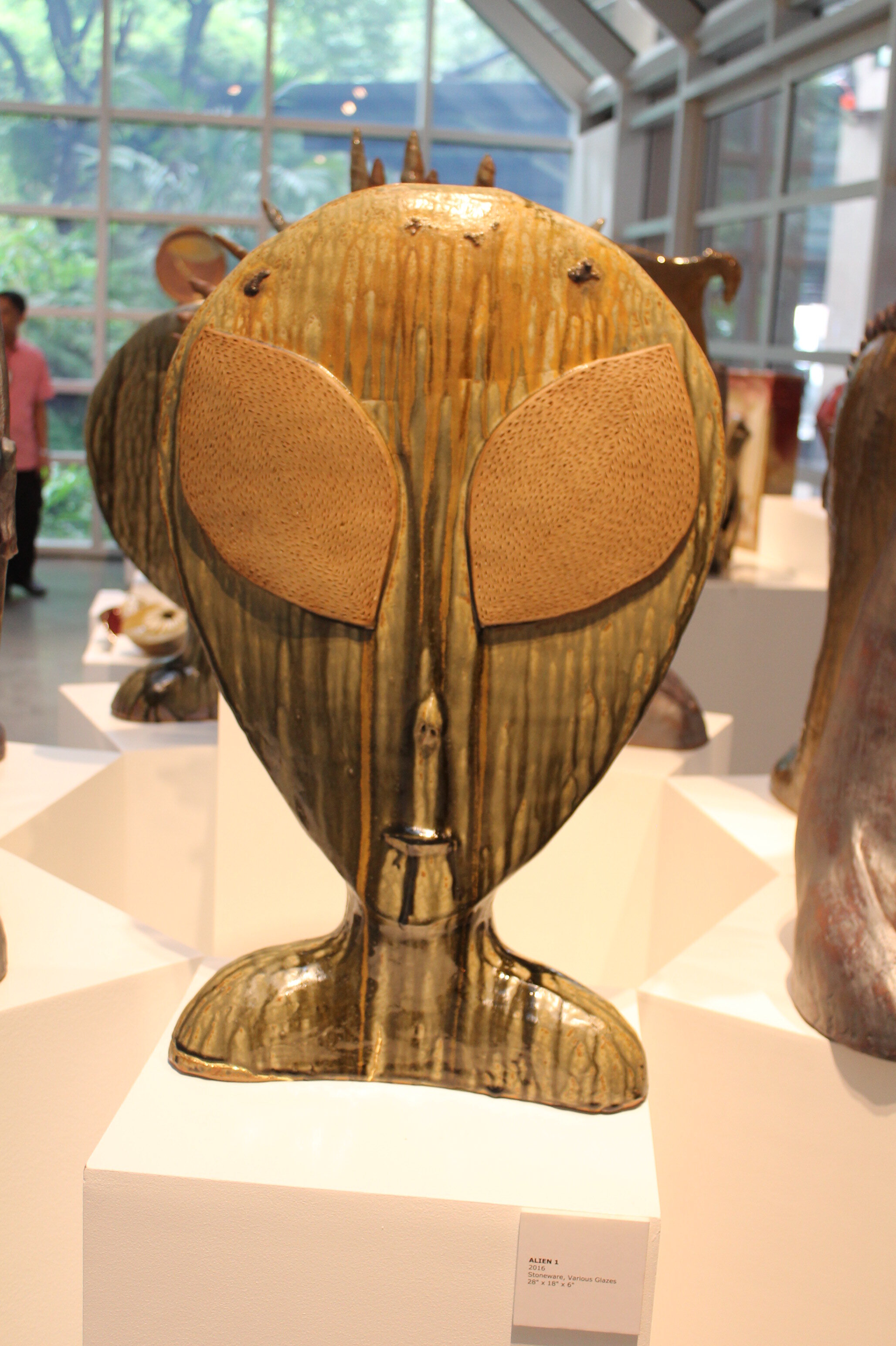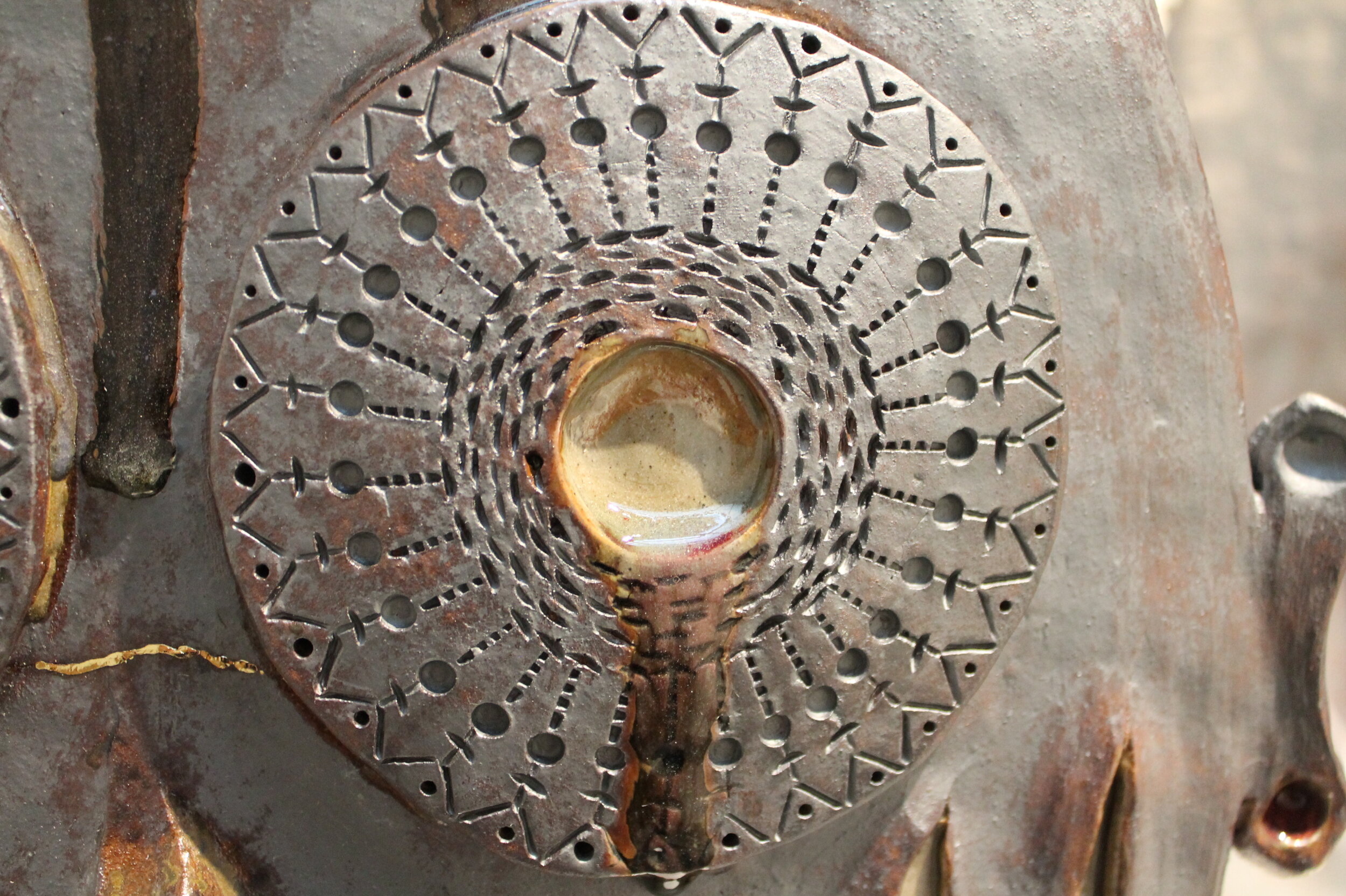Artist Hadrian Mendoza recreates his 'Virus' to reflect today's troubled times
The US-based stoneware potter created two separate pieces in 2016 that spoke of beauty mixed with danger. A couple of weeks ago, he revisits the concept to depict the COVID-19 crisis.
BY BARBARA MAE NAREDO DACANAY
ABS-CBN News, Philippines
ANCX | Apr 16 2020
In 2016, Hadrian Z. Mendoza presented sculptures to the world as symbols of danger, unaware of the COVID-19 menace that would envelope the globe a few years later. “I wasn’t prophetic,” the Virginia-based stoneware artist of his two earlier pieces called “Virus,” that were exhibited in separate shows in the Philippines and United States.
Earlier this month, he decided on creating an updated version of his piece. This time, he made use of a microscopic image of the deadly coronavirus as his inspiration.
Mendoza was initially inspired by a microscopic image of a virus he was unable to identify. Photo from www.hadrianmendozapottery.com
Both of Mendoza’s 2016 “Virus” pieces almost look alike; Both have 10-inch long cone-like protrusions with spiral indentions. making them look like long-stemmed seashells. Each cone was perilously shaped and carefully embedded into a 30-inch roundish base, resulting in an unusual ball-like artwork. One “Virus” has blue-brow tentacles and a blue-alabaster body. The other has chocolate-brown tentacles and a light brown body. The tip of their protrusions, with prickly menace, attracts the eyes and deeply grips the heart.
A tale of three viruses
The bluish “Virus” was shown at Ayala Museum’s Art Space from December 8 to 22, 2016. When Mendoza curated his show at Ayala, he placed his tentacled piece at the center of a group of six large and overpowering heads. “The heads and faces represented different cultures, just like the environment of multi-ethnicity in the US or Europe. I wanted to show people of the whole world with unanimous intent,” he explains.
All of the heads, however, look away from the smaller “Virus,” as if evading the unseen magnitude of its malady. Mendoza says that this orientation projects a cautionary visual narrative. “I didn’t want the faces to eyeball the Virus to show its menace and danger,” Mendoza explained, adding the blocking of the installation was needed because the “Virus” actually “looked beautiful and is compelling to watch.”
Instead of spikes, Mendoza's 2020 "Virus" has suckers, mimicking the "crowns" on top of COVID-19. Top right: Mendoza's wife Kim Nieves, a UP arts graduate now with the World Bank's International Finance Corporation, also made a Virus sculpture. Bottom left: Mendoza's Bulol is updated with a face mask to match our present reality.
Mendoza’s brownish “Virus,” on the other hand, was shown in an exhibit entitled “Homegrown Talent” at District Clay Gallery on Douglas Street, Northeast Washington D.C., from November 19 to December 31, 2016. “At District Clay, the curator placed ‘Virus’ in the center of the gallery. It was presented alone, on its own,” says Mendoza, adding the curator believed it was not necessary to tell a story around it or explain what the piece was all about.
The 2020 “Virus,” on the other hand, has a rounder base, and is studded with multi triangular tentacles that are less pointed. The spikes end with roundish knobs that look like suckers. Scientists call them clumps or S proteins that bite and bind cells. They are supposed to be red. But Mendoza’s stoneware “Virus” is brownish, as if petrified or made to look like an artifact.
Erlinda Halili, whose family owns Manila’s Aspac Airfreight International bought Mendoza’s blue piece while Cass Johnson, owner of DC’s District Clay purchased the brown version. Mendoza says the buyer of the recently made Covid-19 “Virus” wants to remain anonymous.
Mendoza's Ayala Museum "Virus" was shown at its section, Art Space, from December 8 to 22, 2016.
“I once saw beautiful images of a virus in a microscope. I could not remember its name. But I remember asking why a dangerous and invisible virus could look so beautiful under the microscope,” the artist, relaying how the concept was birthed. “The images stayed in my mind. When I made two limited editions of ‘Virus’ in 2016, I didn’t know why. The images just came out while I was working in my studio at the Lorton Workhouse Arts Center.”
The center is one of the 16 buildings of the former Lorton Reformatory in Virginia that was refurbished in 2004 by the Lorton Arts Foundation as a visual and performing arts studio and exhibit area. For USD 4.2 million, Virginia’s Fairfax Country bought the 2,324 acres where the former prison was originally built in 2002 following its closure a year before. Opened to the public in 2008, the center retained the prison’s late 19th and early 20th century revival architecture designed by Snowden Ashford and Albert Harris.
“In 2016, I was specifically making an artwork based on the concept of combining two contrasting qualities, beauty and danger, in one piece. My other aim was to objectify, or magnify, what was invisible and secret to the eyes, through art. Those were my theoretical frameworks in the making of the ‘Virus,’” Mendoza says. He adds that the images intuitively twinkled in his eyes, and his hands naturally followed, from the kneading of the clay, to the shaping, glazing, and firing of the stoneware artwork.
After finishing his masters in Fine Arts at George Washington University, Mendoza went out to teach at such institutions at The Workhouse Arts Center, the Corcoran School of the Arts and Design, and St. Thomas More Cathedral School. After a brief study at the Corcoran School, he came to Manila “to look for his roots while doing stoneware pottery.” The search continued with a meaningful mentorship under master ceramic artist Jon Lorenzo Pettyjohn in 1999. The two eventually put up the Pettyjohn-Mendoza School of Pottery in Makati, a landmark institution for serious Filipino potters that unfortunately closed in 2009.
While in Manila, Mendoza organized the first network of Southeast Asian potters after he received the Toyota Foundation's Network Program Grant in 2007. This led to a show featuring 38 Southeast Asian potters at the Ayala Museum in 2009. He became a resident-artist of Virginia’s Workhouse in March 2010, after he and his family left Manila and stayed in Virginia in late 2009.
No science in his mind
He could not remember if the virus he saw under the microscope was SARS, HiNi, Ebola, or Zika. There was no science in his mind nor readings that egged him to think of virus in art, ahead of COVID-19. “It just happened,” he says simply, while recalling the shivers that went down his spine in watching how his old artworks turned out like quaint and quiet glimpses of COVID’s menace.
Mendoza's predominantly brown District Clay Gallery "Virus" was displayed from November 19 to December 31, 2016.
“It’s like my past artworks are depicting a scary reality I am seeing now. How everyone is running away from COVID-19, how people around the world are running to safety, away from this destructive thing,” he shares.
The artist’s thought calls to mind the words of Filipino poet Virginia Moreno who, in describing the abstract sculptures of Napoleon Abueva, wrote in a 1960s poem, “nothing is real that is not first imaginary.”
In comparison, the reality of Mendoza’s abstract stoneware sculpture was first perceived under a microscope, its shape deeply secret and unknown to many. Giving life to that image is a leap of art, its beauty and its danger imagined first, before its real danger becoming part of life.
